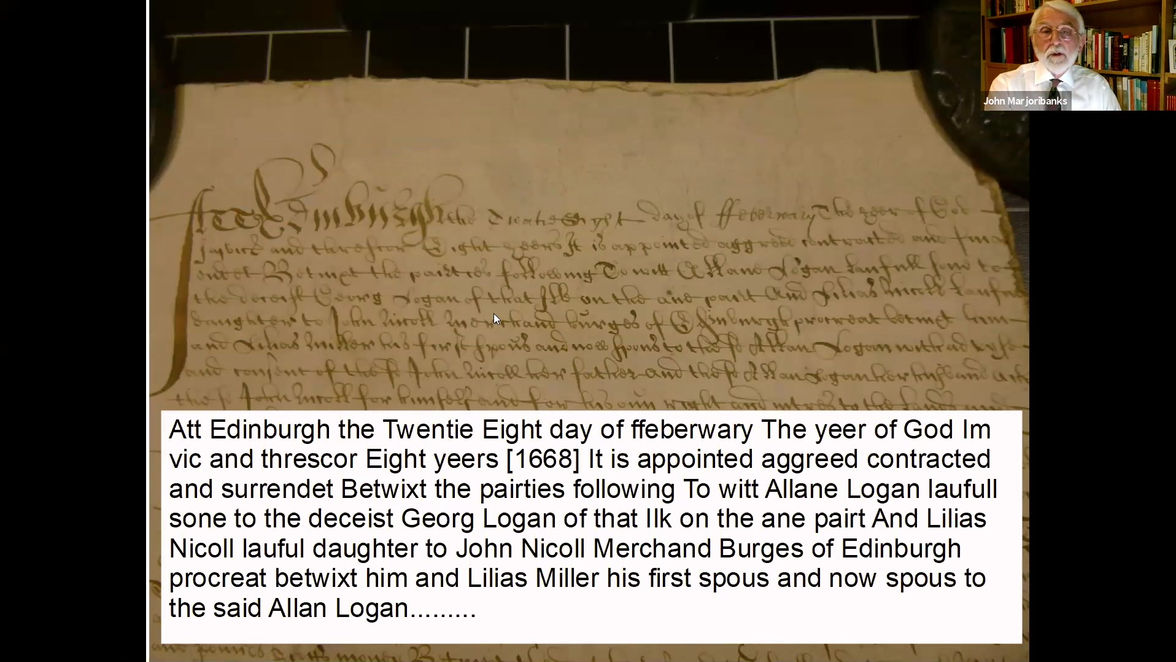Chief Restoration Project
The main goal of the Society has been to find the hereditary Chief of Name and Arms of Logan. This page has the latest information on the project. As you might imagine, this project requires a great deal of funding. Here you will also find links to donate to the project.
About the Project
Currently we are working with the Lord Lyon King of Arms to secure the help of a Supervising Officer from the Court of the Lord Lyon. This will hopefully lead us to holding a family convention, or derbhfine. The purpose of the family convention will be to agree upon and appoint a Commander of Clan Logan. The Commander's role will be to officially and publicly make people aware that we, as a family, are seeking the person who can substantiate a claim as the lawful heir to the title, Chief of Name and Arms of Logan. The documents below will show you how we have progressed over time in this search - a search that has consumed over 20 years of research already!
Chief Restoration Project
The Video Series
Below you will find two videos describing in no small detail the efforts the Society has gone through over the last 20 years trying to find the rightful heir to the title, Chief of Name and Arms of Logan. Part 1 of "Our Rightful Chief of Name and Arms" is an in-depth presentation from our Heritage Officer (Retired), John Logan Marjoribanks. Part 2 takes the viewer through the final searches done of the Scottish archives by reknowned genealogist, Dr. Bruce Durie. The bonus video, "The Last Crusade," is a telling of the fabulous tale of the two Logan Knights and their quest to take the Heart of the Bruce to the Holy Land. It is told in the wonderful style of our Clan Convener, Charles 'Ed' Logan, Sr.

![Logan Shield [1.1.1] Modern.png](https://static.wixstatic.com/media/b97f89_8c5bc43ee8f64292b29be5ab0bf0599d~mv2.png/v1/fill/w_126,h_149,al_c,q_85,usm_0.66_1.00_0.01,enc_avif,quality_auto/Logan%20Shield%20%5B1_1_1%5D%20Modern.png)


